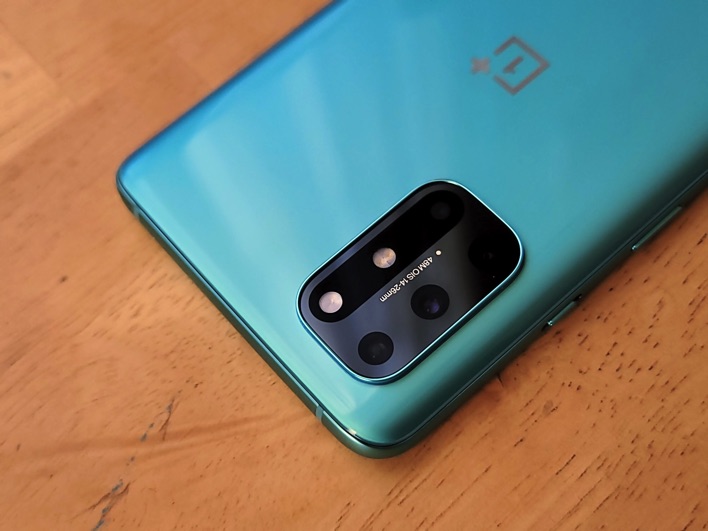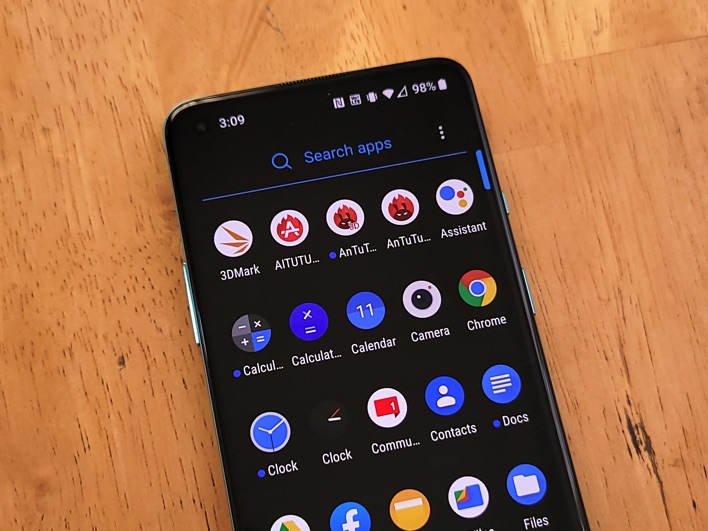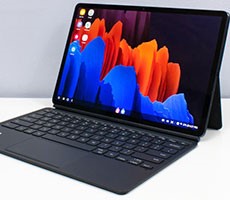OnePlus 8T Review: A Great 5G Phone In Search Of A Discount
Which brings us to today’s $749 OnePlus 8T, the direct successor to the OnePlus 8. It comes with more base RAM/storage (12/256GB), a flatter 120Hz screen, a better 5MP macro, a larger 4500mAh battery, and faster 65W charging. But is all this enough when the OnePlus 8 and 8 Pro (both 8/128GB) are now on sale ($599 and $799), and when Samsung’s $700 Galaxy S20 FE is pushing all the right buttons? Let’s find out in our review.
OnePlus 8T Hardware And Design
Overall, we prefer this updated design over the OnePlus 8’s vertical camera strip in the middle and annoying “waterfall” screen. Curved edges can sometimes just get in the way, but this is of course a subjective design preference. At 160.7 x 74.1 x 8.4mm and 188g, the 8T is a lot easier to handle than larger flagships like the OnePlus 8 Pro. In fact, it’s about the same size and weight as the OnePlus 8 and OnePlus 7T. Overall, this is a sharp-looking phone that feels nice in hand.
In front, there’s a hole punch for the 16MP selfie lens, an optical in-display fingerprint sensor, and the earpiece. That black rectangular bump in the rear packs quad shooters (48MP main, 16MP ultrawide, 5MP macro, and 2MP monochrome), a dual LED flash, and a flicker sensor. Under the hood, you’ll find a 4500mAh battery (split into two identical cells) that supports 65W fast charging, but not wireless charging.
The power/lock button and notification slider are located on the right side, and the volume rocker on the left. You’ll find the speaker, primary mic, USB Type-C port, and dual-SIM tray (no microSD here) along the bottom edge, and the secondary mic on top. While the unlocked 8T is not officially certified for water resistance, T-Mobile’s version is IP68-rated, and both models have a gasket around the SIM tray.
|
| Processing and 5G Platform | Qualcomm
Snapdragon 865 + Snapdragon X55 5G Modem |
| Display | 6.55" FHD+ AMOLED, 2400x1080 resolution, 120Hz, HDR 10+ |
| Memory | 8/12GB
LPDDR4X |
| Storage | 128/256GB UFS 3.1 |
| Rear-Facing Cameras | 48MP
f/1.7 Main OIS, PDAF - 16MP f/2.2 123º Ultra-Wide - 5MP
f/3.0 Macro - 2MP f/2.4 Monochrome |
| Front-Facing Cameras | 16MP f/2.4 |
| Video Recording | Up to 4K @ 60fps, 1080p @ 60fps, 1080p slow-mo |
| Battery | 4500 mAh |
| OS | Android
11 With OxygenOS 11 |
| Dimensions | 162.8 x 75.5 x 8.4mm |
| Weight | 188 grams |
| Connectivity | 802.11ax Wi-Fi, Bluetooth 5.1+LE,
NFC, USB-C, LTE, 5G |
| Colors | Aquamarine
Green, Lunar Silver |
| Pricing | Find the OnePlus 8T @ Amazon, Starting at $749 |
OnePlus 8T Display Quality
In everyday use, those small improvements make a big difference. This is a superb display, with punchy but accurate colors, inky blacks, wide viewing angles, and plenty of brightness -- up to 1100 nits (peak). OnePlus says this screen is thinner and more power efficient than before, and while 90Hz is perfectly fine, 120Hz is still noticeably smoother. And of course, a fully flat display will always trump a “waterfall” design in our book.








